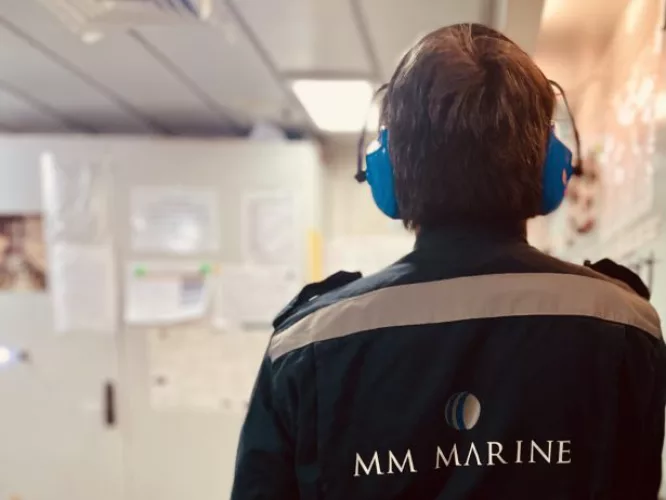Partner Profile
The Mobility House
An innovative and sustainable company, The Mobility House is a pioneer in the development of first- and second-life battery storage systems as well as the realization of numerous vehicle-to-grid applications with renowned partners.
Location
Germany, Switzerland, France & USA
Category
EV infrastructure & technology
The Mobility House was founded in 2009 and operates globally from offices in Zurich, Munich, Paris and Belmont (CA).
Since 2021 Mercuria has been investing in The Mobility House’s technology as one of the world’s leading energy and commodity trading companies.
Here, we had the chance to speak with Robert Hienz, who is CEO of The Mobility House.
Who is The Mobility House?
The Mobility House was founded in 2009 and operates globally from offices in Zurich, Munich, Paris and Belmont (CA). As an innovative and sustainable company, The Mobility House is a pioneer in the development of first- and second-life battery storage systems as well as the realization of numerous vehicle-to-grid applications (V2G or bidirectional charging) with renowned partners.
We also support private and business customers on their way to electromobility through the planning and building process as well as the operation of an individual charging infrastructure. Here we already count over 163,000 sold/installed charging infrastructure projects in more than 50 countries worldwide. As a neutral supplier we work together with many partners such as charging infrastructure manufacturers, installation companies, back-end system operators, energy suppliers and automobile manufacturers. Our intelligent Charging and Energy Management system ChargePilot and the underlying EV Aggregation as well as the Flexibility Trading Platform enable our customers and partners to integrate electric vehicles into the energy system in a way that is both beneficial and future-proof.
Why are The Mobility House and Mercuria working together?
Since 2021 Mercuria has been investing in The Mobility House’s technology as one of the world’s leading energy and commodity trading companies. This follows Mercuria’s strategy to focus more on the energy transition and at the same time signals the importance of The Mobility House’s proprietary software for a faster and more efficient integration of renewable energies into the energy system. The software transforms batteries of electric vehicles into important assets for the energy transition and contributes significantly to the reduction of CO2 emissions.
In turn, The Mobility House benefits significantly from the support and expertise of a big player with profound knowledge of international trading technology. Especially because the market for “Smart Charging” and “Bidirectional Charging” (V2G) is developing rapidly and holds incredible economic and ecological potential. The Mobility House has the technology at hand to serve and significantly shape this market once the regulatory framework is in place. Thanks to Mercuria’s support, we can therefore consistently develop our technical solution and continuously expand our leading market position. A win-win situation for both companies.
How does The Mobility House achieve its vision towards an emission-free energy and mobility future?
Ultimately, our technology connects the automotive and energy sectors by intelligently integrating electric cars into the power grid. The Mobility House focuses on bidirectional charging. This promotes the market penetration of both renewable energy and electric cars. As a key technology in the energy transition, our software is a main driver of sector coupling.
Based on this, we are implementing numerous projects, such as the development of first- and second-life battery storage systems and the realization of vehicle-to-grid applications. With this intelligent integration of electric vehicles, we are helping to minimize grid expansion costs by up to 70 percent, stabilize the power supply and improve the carbon footprint of an electric car by almost double. By using electric vehicles to store energy in the power grid, we are promoting the expansion of renewable energies and make electromobility more affordable. This way, we pave the way to an emission-free future and promote the achievement of climate targets.
Why is bidirectional charging so groundbreaking for this?
Thanks to V2G, electric vehicles are intelligently integrated into the energy system. This way, they make a valuable contribution to stabilizing the power grid by acting as buffer storage. If the share of renewable energies in the power mix is to increase, the power grid will also be challenged, and grid operators will be faced with the challenge of balancing their volatility. This is exactly where electric cars come into play: because they do not move for an average of 23 hours a day, they can be used as temporary battery storage during that time. Electric cars connected to the power grid via V2G flexibly compensate for the fluctuations that inevitably occur when electricity is generated by the sun and wind in a matter of seconds. In concrete terms, 15 million electric vehicles in Germany by 2030 means roughly 750 gigawatt hours (GWh) of capacity – an incredible amount compared to the 40 GWh of pumped storage capacity in Germany. Connected to form a giant swarm storage, the electric car batteries absorb surplus energy at times of high electricity production and feed it back when it is needed.
So, with the help of the technology ChargePilot developed by The Mobility House as well as the EV Aggregation and Flexibility Trading Platform, we are making this untapped potential accessible. Our connection to the European Power Exchange EPEX SPOT SE already signaled a further step toward the intelligent networking of the mobility and electricity markets. In addition, we have extensively tested bidirectional charging in several pilot projects with well-known partners in recent years. This involved the use of both individual electric vehicles as well as 4,500 vehicle batteries without wheels (in the form of 1st and 2nd life battery storages) in various energy markets and products. Most recently, we were able to prove the market potential of aggregated electric car batteries in a six-month field study at the EUREF campus in Berlin: The field study reconfirmed the market need for flexibilities which can in particular be provided by parked bidirectional electric cars. According to the study, trading on the European Power Exchange has shown that, extrapolated to one year, thousands of euros in revenues could be generated per vehicle. Taking into account deductions in the form of tax obligations, among other things, this results in potential savings of at least EUR 650 for end customers.
2024 PARTNER PROFILES
Silvania
Fervo Energy
Ocean Science Expedition
Geonoma
Reporting areas
Governance
Planet
People
Prosperity









